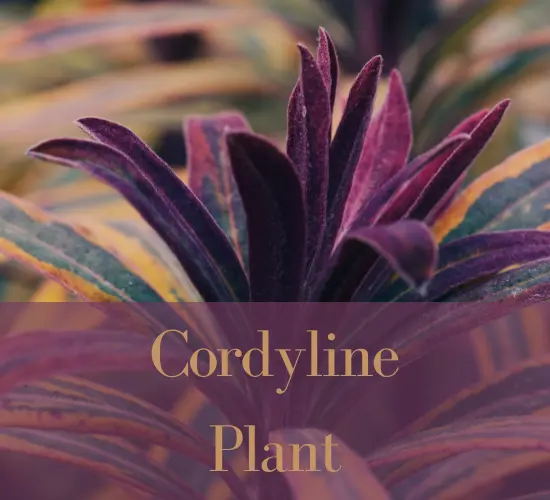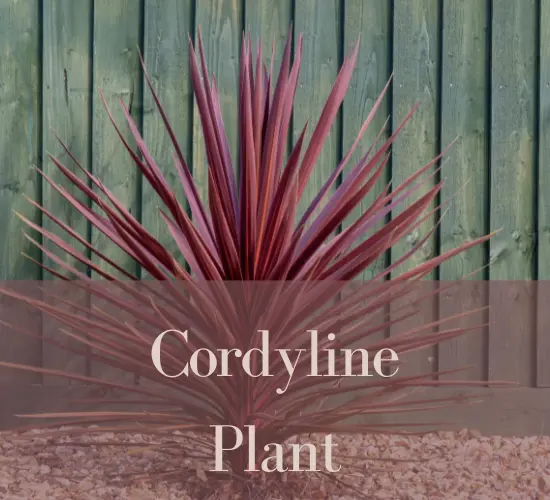Cordyline plants are known for their colorful leaves and can be a beautiful addition to any indoor or outdoor space. However, Cordyline leaves browning can be a sign of underlying issues in their care. As a plant owner, it is essential to understand the causes of browning, such as underwatering, overwatering, tap water, and low humidity.
By knowing the causes, you can take the necessary steps to revive your cordyline and restore its vibrant foliage. In this article, we will provide tips for reviving your cordyline plant and preventing future browning. We will begin by discussing the common causes of browning, such as watering issues and environmental factors.
We will then provide detailed watering tips to ensure that your plant is receiving the appropriate amount of water. Finally, we will explore how to improve humidity and environment for your cordyline plant, which can significantly impact its overall health. By following these tips, you can revive your cordyline and enjoy its beautiful foliage once again.
Table of Contents
Key Takeaways

- Browning on Cordyline leaves can be caused by underwatering, overwatering, tap water, and low humidity.
- Underwatering can lead to crispy brown leaves while overwatering can result in dark brown and mushy leaves.
- To water properly, wait until the top 25-50% of the soil is dry and avoid letting the plant become too soggy. Use distilled or rainwater if possible, or leave tap water out overnight to evaporate chemicals.
- Cordyline plants prefer warm and humid environments, so misting, using a pebble tray, or using a humidifier nearby can help maintain proper humidity levels.
Causes of Browning
Cordyline leaves Browning can be caused by a variety of factors such as underwatering, overwatering, tap water, and low humidity. Preventing browning on cordyline leaves starts with proper watering techniques. It is important to water cordyline plants when the top 25-50% of the soil is dry but never let the plants become soggy. If tap water must be used, it should be left out overnight to allow for chemical evaporation. Alternatively, distilled or rainwater can be used if available. It is also important to check with the filtered water manufacturer for fluoride removal.
Low humidity can also contribute to browning on cordyline leaves. Cordyline plants prefer warm and humid environments. To prevent browning, misting the plants often, using a pebble tray, or placing a humidifier nearby can increase humidity levels.
Additionally, common pests such as spider mites, mealybugs, and scale insects can also cause browning on cordyline leaves. Regularly inspecting the plants and treating any pest infestations promptly can prevent further damage to the leaves.
Watering Tips

To maintain the health of your cordyline plant, it is important to carefully monitor its water intake and avoid allowing the soil to become excessively moist. Underwatering can cause crispy brown leaves while overwatering can result in dark brown and mushy leaves. To ensure proper watering, it is recommended to water the plant when the top 25-50% of the soil is dry. It is also important to never let cordyline plants become soggy, as this can lead to root rot and other plant health issues.
One way to ensure the best types of water for cordyline plants is to use distilled or rainwater. If tap water must be used, it is recommended to leave it out overnight to allow chemicals to evaporate. Additionally, checking with a filtered water manufacturer for fluoride removal can be helpful. By following these watering tips and using the best types of water, you can help revive your cordyline plant and prevent further browning of its leaves.
| Indicator of Underwatering | Indicator of Overwatering | Action to Take |
|---|---|---|
| Crispy brown leaves | Dark brown and mushy leaves | Water less frequently and increase humidity |
| Soil is dry to the touch | Soil is constantly wet | Re-pot in well-draining soil and reduce watering frequency |
| Plant appears wilted | Plant appears swollen | Move the plant to a brighter location and increase airflow |
Humidity and Environment
Maintaining proper humidity levels and creating a warm environment is essential for the health of cordyline plants.
These tropical plants thrive in environments with high humidity, so it is important to simulate their natural habitat indoors.
There are several ways to increase humidity around cordyline plants, such as misting them regularly or placing a pebble tray filled with water beneath them.
Another option is to use a humidifier near the plant to keep the air moist, especially during the dry winter months when indoor heating can reduce humidity levels.
When it comes to indoor locations for cordyline plants, it is best to choose a spot that receives bright, indirect sunlight.
Avoid placing them in direct sunlight, as this can scorch the leaves.
Additionally, cordyline plants prefer warmer temperatures ranging between 60-75°F, so be sure to keep them away from drafts or cold windows.
With proper humidity levels and location, your cordyline plant can thrive and maintain its vibrant green color.
Frequently Asked Questions
Can cordyline plants be propagated from cuttings?
Cordyline plants can be propagated from stem cuttings using various propagation techniques. Optimal conditions for propagation include a well-draining medium, high humidity, and warm temperatures. Technical knowledge and attention to detail are necessary for successful propagation.
How often should I fertilize my cordyline plant?
Fertilization frequency for cordyline plants depends on their nutrient requirements, which can vary based on factors like soil quality and plant size. Generally, a balanced fertilizer can be applied once a month during the growing season to promote healthy growth and foliage.
What pests are common in cordyline plants and how can I treat them?
Common pests in cordyline plants include mealybugs, spider mites, and scale insects. Pest control measures include manual removal, insecticidal soaps, and neem oil. Preventive measures such as regular cleaning and proper watering can also help avoid infestations.
Is it normal for cordyline plants to lose lower leaves as they grow taller?
Leaf discoloration is a common issue with Cordyline plants. As they grow taller, it is normal for lower leaves to drop off. Proper watering techniques, such as not letting the plant become soggy and using distilled water, can help prevent browning.
How much light does a cordyline plant need to thrive?
To achieve optimal growth, it is important to consider the lighting conditions for cordyline plants. Indoor plants require bright, indirect light while outdoor plants prefer partial shade. Adjust light exposure accordingly, ensuring freedom for your plant to thrive.
Conclusion
In conclusion, caring for a cordyline plant requires a delicate balance of attention and awareness. Neglecting its needs can result in browning leaves, signaling underlying issues such as overwatering or low humidity. However, with the proper care and attention, you can revive your cordyline and restore its vibrant and colorful foliage.
Think of your cordyline plant as a delicate ecosystem, where each element plays a vital role in its health and well-being. Just as a forest needs the right amount of sunlight, water, and nutrients to thrive, so too does your cordyline plant require the correct balance of care.
With regular watering, proper drainage, and attention to humidity and the environment, you can create an ideal ecosystem for your cordyline to flourish. Remember, a healthy cordyline plant not only brightens up your living space but also brings a sense of vitality and renewal to your surroundings.